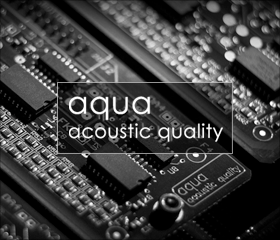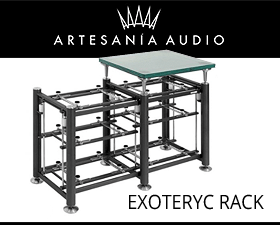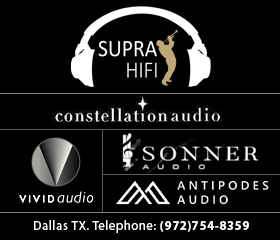This topic fascinates me & I believe that teasing out the psychoacoustic rules that determine great sound in our 2 channel reproduction chains is the next advance that audio reproduction has to address.
I have not seen it directly addressed on this forum - it is touched on in many spots so I thought it might be interesting to bring together what factors may be responsible for a more realistic 2 channel reproduction.
I'm not interested in fighting over analogue Vs digital or what is euphonic distortion or which is technically superior - I'm interested in gathering together a list of agreed sound improvers & teasing out possible psychoacoustic reasons behind them - it doesn't have to be correct - consider it more a brainstorming session.
This was seeded from Dr. Ulirich "Uli" Brueggemann crosstalk function, called "flow" in Acourate that dallasjustice started a thread on. There are many interesting factors that are being related in that thread which I would like to gather here & maybe add to with other relevant factors on for discussion.
As that thread is mainly about how digital can sound more relaxed by applying a factor found in vinyl playback, I thought it might be interesting to gather together the other factors that vinyl has - some of which may be detrimental to our perception of realism & some advantageous.
This is a complicated area for consideration so let's simplify the discussion - let's consider that the event was recorded live in a real acoustic space & we are reproducing it in our acoustic space using our 2 channel system. So, we immediately have one acoustic space of overlaying another & we are interested in perceiving the underlying one & we have a two point source trying to create an illusion of a 3D space. The most realistic way this can be achieved is to tick as many of the psychoacoustic boxes as such a system allows (let's leave aside any talk of how multi-channel). What I'm trying to gather together here is a possible list of such factors from people who are genuinely interested in improving their listening experience (without the usual arguments)
- Uli's Crosstalk which is frequency dependent seems to give a more relaxed listening experience. Why? Because the theory suggests that it gives us better localisation cues by correcting the slight misalignment that using strictly loudness based localisation causes. This is an interesting anomaly which occurs because we tend to naturally localise both with ILD (loudness differences of the same signal arriving at our ears) & ITD (timing differences of the signal arriving at our ears). When ITD is taken away (not used in the recording process) then ILD becomes less than 100% effective at localisation & leads to some smearing of the location of the sound because just relying on ILD we psychoacoustically don't perceive all frequencies of an instruments signal as coming from the same place. Correcting the psychoacoustic frequency variability of the loudness would seem to be worthwhile to addressing this. One way of slightly correctly shifting the frequency elements of the source signal is to introduce some crosstalk which varies with frequency. This will probably only work for those recordings where studio panning is used & maybe not for the situation of a recording of a real venue done with a good microphone technique (others will have to comment on this as I'm unsure of the recording processes & micing techniques) - perhaps recordings from 50s & older classical recording fall into this category?Maybe most modern recordings are manipulated in the studio in some way?
- it appears that vinyl playback automatically imposes this sort of frequency dependent crosstalk mainly because of the mechanics of cartridges, I believe? Could this be one reason why classical recordings are considered more successful on digital than on vinyl (could be ticking my neck out here but I'm just reiterating what I thought was a consensus - if such a thing can be found in audio).
- If we are considering psychoacoustics it's worthwhile to examine (not necessarily blindly accept) what some experts in the field have to say. I quote here one such J_J & what he has to say about vinyl playback:
So this loudness growth issue results in:
Some other factors that have been identified on the Uli thread as possible factors that could do with a more widespread airing:
- microphone choice & positioning (close mic'ing being one of the unnatural choices?)
- a small bit of reverb in vinyl playback
Something else that tweaked my interest is the idea of splash speakers like the ceiling firing Zephrin speakers where an attenuated version of the soundfield is bounced off the ceiling so as to represent a late arrival reflection. The cube8 & other multi driver, multi directional firing speakers seem to provide the same sense of envelopment. My first thoughts on this were that perhaps the late arrival gives a better psychoacoustic clue that allows us to continually & easily differentiate the room's playback acoustic from the venue acoustic on the recording?
Anyway, I'm hoping that other ideas & theories/guesses could be offered here as an open discussion area - a brainstorming thread on psychoacoustics & our 2 channel playback systems?
I have not seen it directly addressed on this forum - it is touched on in many spots so I thought it might be interesting to bring together what factors may be responsible for a more realistic 2 channel reproduction.
I'm not interested in fighting over analogue Vs digital or what is euphonic distortion or which is technically superior - I'm interested in gathering together a list of agreed sound improvers & teasing out possible psychoacoustic reasons behind them - it doesn't have to be correct - consider it more a brainstorming session.
This was seeded from Dr. Ulirich "Uli" Brueggemann crosstalk function, called "flow" in Acourate that dallasjustice started a thread on. There are many interesting factors that are being related in that thread which I would like to gather here & maybe add to with other relevant factors on for discussion.
As that thread is mainly about how digital can sound more relaxed by applying a factor found in vinyl playback, I thought it might be interesting to gather together the other factors that vinyl has - some of which may be detrimental to our perception of realism & some advantageous.
This is a complicated area for consideration so let's simplify the discussion - let's consider that the event was recorded live in a real acoustic space & we are reproducing it in our acoustic space using our 2 channel system. So, we immediately have one acoustic space of overlaying another & we are interested in perceiving the underlying one & we have a two point source trying to create an illusion of a 3D space. The most realistic way this can be achieved is to tick as many of the psychoacoustic boxes as such a system allows (let's leave aside any talk of how multi-channel). What I'm trying to gather together here is a possible list of such factors from people who are genuinely interested in improving their listening experience (without the usual arguments)
- Uli's Crosstalk which is frequency dependent seems to give a more relaxed listening experience. Why? Because the theory suggests that it gives us better localisation cues by correcting the slight misalignment that using strictly loudness based localisation causes. This is an interesting anomaly which occurs because we tend to naturally localise both with ILD (loudness differences of the same signal arriving at our ears) & ITD (timing differences of the signal arriving at our ears). When ITD is taken away (not used in the recording process) then ILD becomes less than 100% effective at localisation & leads to some smearing of the location of the sound because just relying on ILD we psychoacoustically don't perceive all frequencies of an instruments signal as coming from the same place. Correcting the psychoacoustic frequency variability of the loudness would seem to be worthwhile to addressing this. One way of slightly correctly shifting the frequency elements of the source signal is to introduce some crosstalk which varies with frequency. This will probably only work for those recordings where studio panning is used & maybe not for the situation of a recording of a real venue done with a good microphone technique (others will have to comment on this as I'm unsure of the recording processes & micing techniques) - perhaps recordings from 50s & older classical recording fall into this category?Maybe most modern recordings are manipulated in the studio in some way?
- it appears that vinyl playback automatically imposes this sort of frequency dependent crosstalk mainly because of the mechanics of cartridges, I believe? Could this be one reason why classical recordings are considered more successful on digital than on vinyl (could be ticking my neck out here but I'm just reiterating what I thought was a consensus - if such a thing can be found in audio).
- If we are considering psychoacoustics it's worthwhile to examine (not necessarily blindly accept) what some experts in the field have to say. I quote here one such J_J & what he has to say about vinyl playback:
So, two issues - apparent psychoacoustic increase in dynamic range & L/R channel enhancement. I don't understand what the last one means - what enhancement, loudness, separation,other?But LP can sound like it has more dynamic range, because of the distortion/loudness growth issues. Likewise, it can have a wider, more complex soundstage for the same reasons. Many LP playback systems do enhancement of the L-R part of the stereo signal due to both stylus beam pivot issues as well as cartridge design issues.
So this loudness growth issue results in:
I'm wondering if this could be openly discussed without trench warfare?More specifically, people hear it as additional positions in the soundstage being introduced at high levels. Not width, which is has also been evaluated, and which of course changes with changes in M/S balance.
Some other factors that have been identified on the Uli thread as possible factors that could do with a more widespread airing:
- microphone choice & positioning (close mic'ing being one of the unnatural choices?)
- a small bit of reverb in vinyl playback
Something else that tweaked my interest is the idea of splash speakers like the ceiling firing Zephrin speakers where an attenuated version of the soundfield is bounced off the ceiling so as to represent a late arrival reflection. The cube8 & other multi driver, multi directional firing speakers seem to provide the same sense of envelopment. My first thoughts on this were that perhaps the late arrival gives a better psychoacoustic clue that allows us to continually & easily differentiate the room's playback acoustic from the venue acoustic on the recording?
Anyway, I'm hoping that other ideas & theories/guesses could be offered here as an open discussion area - a brainstorming thread on psychoacoustics & our 2 channel playback systems?















